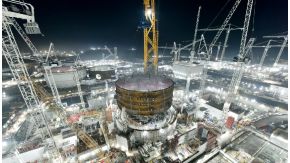
ITI Group to install safety monitoring systems at Hinkley Point C
As the construction of Hinkley Point C progresses, ITI Group has been selected to provide a critical monitoring system that will be an important enabler for the beginning of site installation and commissioning works.
ITI Group’s SCADA system and Network Engineering works for the Temporary Control Room will monitor the internal working environment of the electrical buildings and turbine halls, thus ensuring personnel safety as they construct the largest nuclear power station in the UK fleet.
ITI Group will provide a turnkey solution, managing the design and manufacture through to installation and commissioning, including responsibility for cyber security of the Codra Panorama SCADA system, network cabinets, and Operator Workstations within the Temporary Control Room.
This will be ITI Group’s second project at Hinkley Point C, the UK’s first new Nuclear Power Station in 30 years, having already been engaged to design, build and deliver the safety, control and instrumentation systems for the heating, ventilation, air conditioning (HVAC) systems for the Electrical Buildings, the turbine halls and their associated buildings. With a strong history of proven experience in the nuclear sector, ITI Group is well suited to undertake this latest project for Hinkley Point C.
Bryn Thomas, Sales Director for ITI commented: “This is a fantastic opportunity for ITI Group to demonstrate our immense expertise in this field and to deliver a robust technical solution for what is one of the most critical enabling systems on the Hinkley Point C site. We are extremely pleased to have been selected for this project and are looking forward to working in close collaboration with the project team.”
Marking a significant milestone in the revitalisation of our nuclear power industry, Hinkley Point C will make a major contribution to the UK’s move to reduce carbon emissions. The electricity generated by its two EPR reactors will offset 9 million tonnes of carbon dioxide emissions a year, or 600 million tonnes over its 60-year lifespan, whilst providing low-carbon electricity for around 6 million homes.
News by Category
- BECBC
- Cumbria
- Nuclear
- Social Value
- Professional Services
- Clean Energy
- Business
- People
- Government
- BECBC Member News
